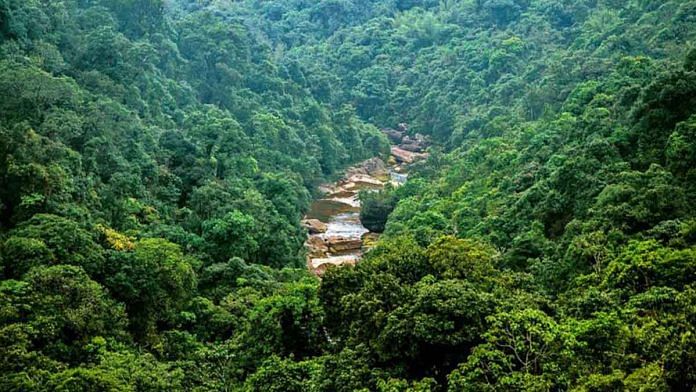As a small child growing up in a small village in a state called Nagaland in the northeastern part of India, I was not aware of ‘mainland’ India. It was only with school textbooks, from as soon as Class 1 onwards, that we were taught about the history and cultural practices of the different parts of India and its people.
I learnt so much, and was also made aware of the culture and history of India.
However, as I grew up, I realised that the textbooks in my school have little to no mention about Northeast India. Yes, my Northeast India where I was born and brought up. That realisation made me sad and angry because after learning so much about mainland India and the world, I did not find a single topic on the Northeast.
One of the reasons for racial discrimination against Northeast Indians, who go to the bigger cities for studies or jobs, is that mainland Indians do not study about them in their textbooks.
A recent incident where a YouTuber named Paras Singh called an MLA from Arunachal Pradesh “Chinese or not Indian enough” is also due to this lack of knowledge. The incident caused widespread outrage in Northeast India and more than 30 universities and student organisations across the region organised a ‘Twitter storm’ on 4 June, demanding that the history and culture of Northeast be made a part of the National Council of Educational Research and Training (NCERT) curriculum. The Twitter storm was the number two and three trend.
It is very common for a Northeast Indian to get harassed or hear racial slurs in mainland India, just because of how we look or dress. I was called “Chingchong”, “Nepali” and “Chinese” as I was passing by a small shop in Pune in 2018.
There have also been many instances where people from the Northeast are murdered in broad daylight. Nido Tania’s death being the most prominent and protested about. However, even that incident did not receive much attention from the central government.
Assaults on the youth from the Northeast are common in ‘mainland’ India.
This is indicative of the complete ignorance of the mainland Indians about the Northeast. Not just the people, the central government is equally responsible for such
ignorance and negligence of the region’s culture and history.
Covid made racial discrimination worse
Furthermore, with the Covid-19 pandemic, racial discrimination against people from the Northeast has seen a steep rise. A study conducted by the Indian Council of Social Science
Research (ICSSR) on racial discrimination and hate crimes against people from Northeast
India found that 78 per cent of the people from the region who were interviewed
believed that physical appearance was the most important reason for prejudice against
them.
The calls to include a chapter on the Northeast — with its geography, culture, ethnicity and lifestyle — in NCERT textbooks will make students aware about different facets of the region.
This includes knowing about Magnificent Mary or Mary Kom (now an MP) from Manipur, a Northeast Indian, who is the only female to win the World Amateur Boxing Championship for a record six times. She is also the only female boxer to have won a medal in each one of the first seven world championships and the only boxer to win eight world championship medals.
They will find out about Hima Das, an Indian sprinter from the state of Assam, who is the first Indian female athlete to win a gold medal in a track event at IAAF World U20 Championships. Others like Bhaichung Bhutia, Eugenson Lyngdoh and many more from the region who brought laurels to India, will also be learnt about.
Obscured from the world by ageless forests and formidable mountain ranges, the Northeast Indian states are one of Asia’s last great natural and anthropological sanctuaries.
Here’s a chapter on these states — Arunachal Pradesh (Land of the rising Sun), Assam
(Gateway to Northeast), Manipur (Jewel of India), Meghalaya (Abode of Clouds),
Mizoram (Land of the Blue Mountains), Nagaland (Land of Festivals), Sikkim
(Himalayan Paradise) and Tripura (Land of Diversity). And an account of the land,
people, history, culture and other aspects of this region must to be included in the
NCERT textbooks.
If theses changes are brought about in the education sector, I believe I will see a better India — particularly when mainland Indians get acquainted with the region and respect its culture and the history and struggle of Northeast Indians.
This will also bring a positive impact on the racial discrimination faced by people and a harmonious relationship can be built between Northeast Indians and the mainlanders.
Therefore, inclusion of a chapter on the Northeast in NCERT textbooks is important because the region is an important part of India.
Nrithung Kikon is a student of School of Agricultural Sciences and Rural Development, Medziphema Campus, Nagaland University






